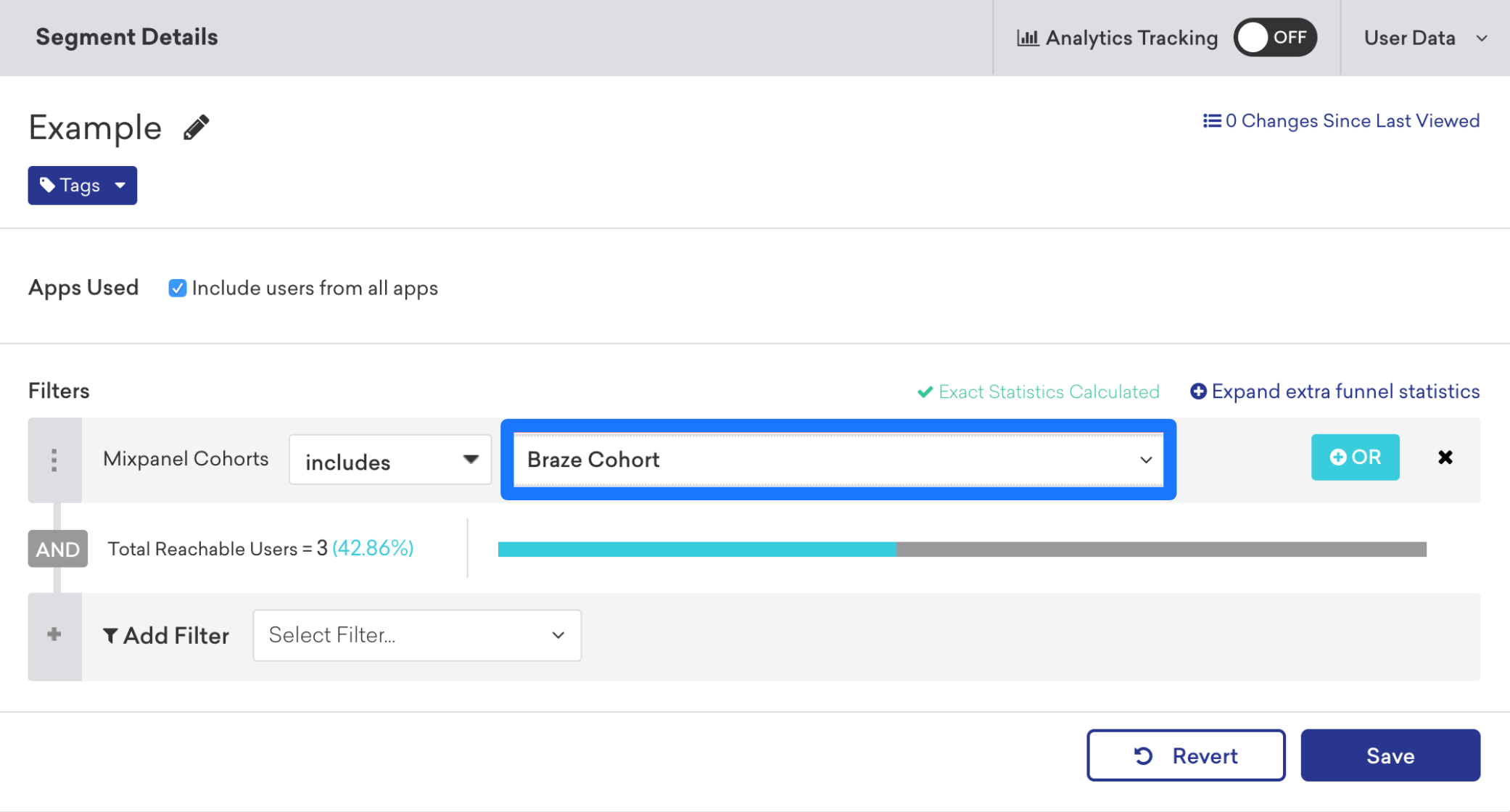Mixpanel cohort import
This article describes how to import user cohorts from Mixpanel to Braze. For more information on integrating Mixpanel and its other functionalities, see the main Mixpanel article.
Data import integration
Any integration you set up will count toward your account’s data point volume.
In adherence to Mixpanel’s data retention policies, events sent before January 1, 2010 will be removed during import.
Step 1: Get the Braze data import key
In Braze, navigate to Partner Integrations > Technology Partners and select Mixpanel. Here, you will find the REST endpoint and generate your Braze data import key.
Once generated, you can create a new key or invalidate an existing one. The data import key and the REST endpoint are used in the next step when setting up a postback in Mixpanel’s dashboard.
Step 2: Set up the Braze integration in Mixpanel
In Mixpanel, navigate to Data Management > Integrations. Next, select the Braze integration tab and click Connect. In the prompt that appears, provide the Braze data import key and REST endpoint, and click Continue.

Step 3: Export a Mixpanel cohort to Braze
In Mixpanel, navigate to Data Management > Cohorts. Select the cohort to send to Braze and then select Export to Braze. Lastly, select a one-time sync or dynamic sync. Selecting dynamic sync will sync your Braze cohort every 15 minutes to match users in Mixpanel.

Only users who already exist within Braze will be added or removed from a cohort. Cohort Import will not create new users in Braze.
Step 4: Segment users in Braze
In Braze, to create a segment of these users, go to Audience > Segments, name your segment, and select Mixpanel_Cohorts as the filter. Next, use the “includes” option and choose the cohort you created in Mixpanel.

After saving, you can reference this segment during Canvas or campaign creation in the targeting users step.
User Matching
Identified users can be matched by either their external_id or alias. Anonymous users can be matched by their device_id. Identified users who were originally created as anonymous users can’t be identified by their device_id, and must be identified by their external_id or alias.
 Edit this page on GitHub
Edit this page on GitHub